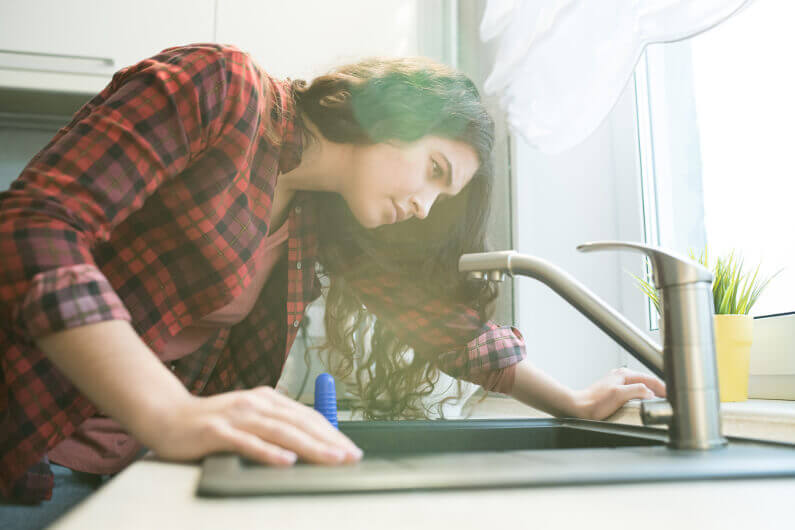Practical Guidance for Handling Plumbing Issues in Older Homes
Practical Guidance for Handling Plumbing Issues in Older Homes
Blog Article
We've stumbled on this post involving Plumbing Issues in Older Properties and How to Fix Them down the page on the internet and thought it made good sense to discuss it with you on this page.

Older homes commonly include charm, personality, and background, yet they can likewise bring a host of plumbing issues. Whether you're managing maturing pipes, low water pressure, or leakages, recognizing how to attend to these usual issues is important to preserving a secure and practical home. In this guide, we'll discover the typical pipes obstacles dealt with by older homes and provide sensible services to maintain your pipes in top form.
Recognizing Common Pipes Issues
Aging Pipes
Among the most usual problems in older homes is maturing pipes. Relying on the era in which your home was built, the pipes might be made from products that have actually weakened over time, such as galvanized steel, cast iron, or even lead. These products can rust, come to be weak, or develop leakages, resulting in water damages and potential health hazards.
Water Top Quality Testing
Older pipelines can affect the quality of your water. Conduct a water high quality test to look for contaminants such as lead, corrosion, or various other impurities that might be introduced by maturing pipelines.
Solutions for Typical Plumbing Concerns
Replacing Aging Pipes
If your home has old, deteriorating pipes, take into consideration replacing them with modern materials like copper or PEX. This can be a substantial investment, yet it will stop future problems and improve the security and reliability of your plumbing system.
Dealing With Low Tide Pressure
To deal with low water pressure, start by cleaning or replacing old fixtures and eliminating mineral accumulation in the pipelines. If the trouble lingers, it may be required to replace sections of corroded pipelines.
Fixing and Changing Dripping Pipelines
For small leaks, you can utilize pipe clamps or epoxy putty as a short-lived fix. Nevertheless, it's finest to replace leaking pipes entirely to stay clear of more damages.
Updating Components
Updating old components to contemporary, water-efficient versions can boost your home's pipes efficiency and minimize water usage. Try to find components with the WaterSense label for the very best effectiveness.
Taking Care Of Pipeline Rust
If your pipes are corroded, changing them with corrosion-resistant materials like copper, PVC, or PEX is the best solution. Normal examinations and water top quality upkeep can assist stop additionally deterioration.
Low Water Pressure
If you're experiencing low water pressure, it could be as a result of mineral deposits, corrosion inside the pipes, or old components that are no more working successfully. This can be a significant hassle, particularly in locations like showers and sinks.
Leaking Pipes
Leaks are one more constant concern in older homes, frequently caused by corroded or worn-out pipes. Even little leakages can bring about substantial water damage, mold and mildew growth, and increased water bills if not dealt with promptly.
Out-of-date Fixtures
Out-of-date plumbing components such as taps, commodes, and showerheads not only look old but may additionally be much less effective, prone to leaks, or incompatible with contemporary pipes criteria.
Pipe Rust
Rust is a typical issue in older pipes, particularly those made from galvanized steel or cast iron. Corroded pipelines can restrict water flow, trigger discoloration, and ultimately bring about leakages or pipe ruptureds.
Evaluating the Problem of Your Plumbing
Evaluating Visible Pipelines
Beginning by evaluating any type of noticeable pipelines in your house, such as those in basements, crawl spaces, or under sinks. Try to find signs of deterioration, leakages, or corrosion, which can indicate underlying problems.
Looking for Leakages
Check for leakages by evaluating areas around taps, commodes, and under sinks. You can also monitor your water meter before and after a duration of no water use to identify covert leakages.
When to Call a Professional
While some plumbing problems can be taken care of with DIY remedies, there are times when it's best to call an expert. If you're handling significant leaks, considerable rust, or are uncertain concerning the condition of your pipelines, a certified plumbing technician can offer expert evaluation and fixing.
Preventive Maintenance Tips
Normal Evaluations
Regularly check your plumbing system for indications of damage. Catching issues early can stop expensive repair services down the line.
Water Stress Regulation
Guarantee your water stress is within the advised range to prevent emphasizing your pipelines and fixtures. A plumber can set up a pressure regulatory authority if required.
Water Top Quality Upkeep
Install water filters or softeners if your water high quality is poor. This can safeguard your pipes and fixtures from damages brought on by difficult water or contaminants.
Proactive Pipe Replacement
If your home has older pipelines, think about positive replacement before significant concerns occur. This can conserve you from emergency situation repair services and water damage.
Conclusion
Dealing with pipes problems in older homes calls for a combination of alertness, preventative upkeep, and timely upgrades. By comprehending the common challenges and recognizing when to seek professional aid, you can ensure your pipes system continues to be practical and trusted for years to come.
Common Plumbing Issues in Older Homes and How to Fix Them
Owning an older home in Australia comes with its unique charm and a set of challenges, especially when it comes to plumbing. The Sunshine Coast has many older properties that can harbour plumbing problems that aren t just inconvenient but potentially costly. Here s a look at some common plumbing issues in older homes and expert advice on how to handle them.
Outdated Piping Materials
Many older homes were built with galvanised steel, cast iron, or even lead pipes, materials that are far from ideal by today s standards. Galvanised pipes are prone to corrosion and clogging, while lead pipes pose serious health risks.
How to Fix:
Replacing old pipes is a job for a professional. Upgrading to copper or PVC piping not only enhances water quality and flow but also increases the property s safety and value. If you suspect your home has outdated materials, a licensed plumber can conduct a thorough inspection and recommend the best course of action.
Corrosion and Pipe Degradation
Over time, exposure to water and minerals can cause pipes to corrode, leading to leaks, bursts, and water contamination. Corrosion is especially common in homes over 50 years old.
How to Fix:
Regular inspections can catch early signs of corrosion. If corrosion is found, the affected section of piping often needs to be replaced. For homes with extensive corrosion, a complete plumbing overhaul might be necessary. It s crucial to consult with a plumbing expert to understand the extent of the issue.
Tree Root Intrusion
Older neighbourhoods usually have mature trees whose roots can intrude into pipe lines, causing blockages or damage. This is particularly problematic for sewer lines, where roots seek out water sources.
How to Fix:
A plumber can use a specialised camera to inspect sewer lines for root intrusion. If roots are a problem, methods like root cutting or hydro-jetting can clear the obstruction. In severe cases, part of the pipe may need replacing. Consider root barriers around the piping to prevent future issues.
Inadequate Water Pressure
Low water pressure in older homes can be due to various factors, including corroded water lines, sediment build-up in pipes, or outdated fixtures.
How to Fix:
First, check if the low pressure is isolated to one area or throughout the house. Replacing old fixtures can sometimes resolve the issue. However, if the problem is more widespread, it might be due to sediment or corrosion. Flushing the system or replacing the affected pipes usually restores normal pressure. Again, a professional assessment is advisable.
Outdated Fixtures
Older homes often feature fixtures that are not only visually dated but functionally inefficient. This includes everything from toilets and taps to showerheads and washing machine hoses.
How to Fix:
Updating these fixtures can improve both water efficiency and the aesthetic appeal of your home. Modern fixtures are designed to conserve water, which can significantly reduce your water bill and lessen your environmental impact.
Conclusion
Maintaining the plumbing in an older home requires a proactive approach. Regular checks and updates are key to preserving these beautiful properties. If you re facing plumbing issues in your older home, it s best to call on experienced professionals like Green & Gold Plumbing & Gas. With the right expertise, even the most daunting plumbing problems can be resolved, ensuring that your home s character is maintained while its functionality is enhanced.
https://gandgplumbing.com.au/common-plumbing-issues-in-older-homes-and-how-to-fix-them/

We had been brought to that report on from a good friend on a different domain. Are you aware of somebody else who is fascinated with the topic? Please feel free to share it. Thank you so much for your time spent reading it.
Book-Now Report this page